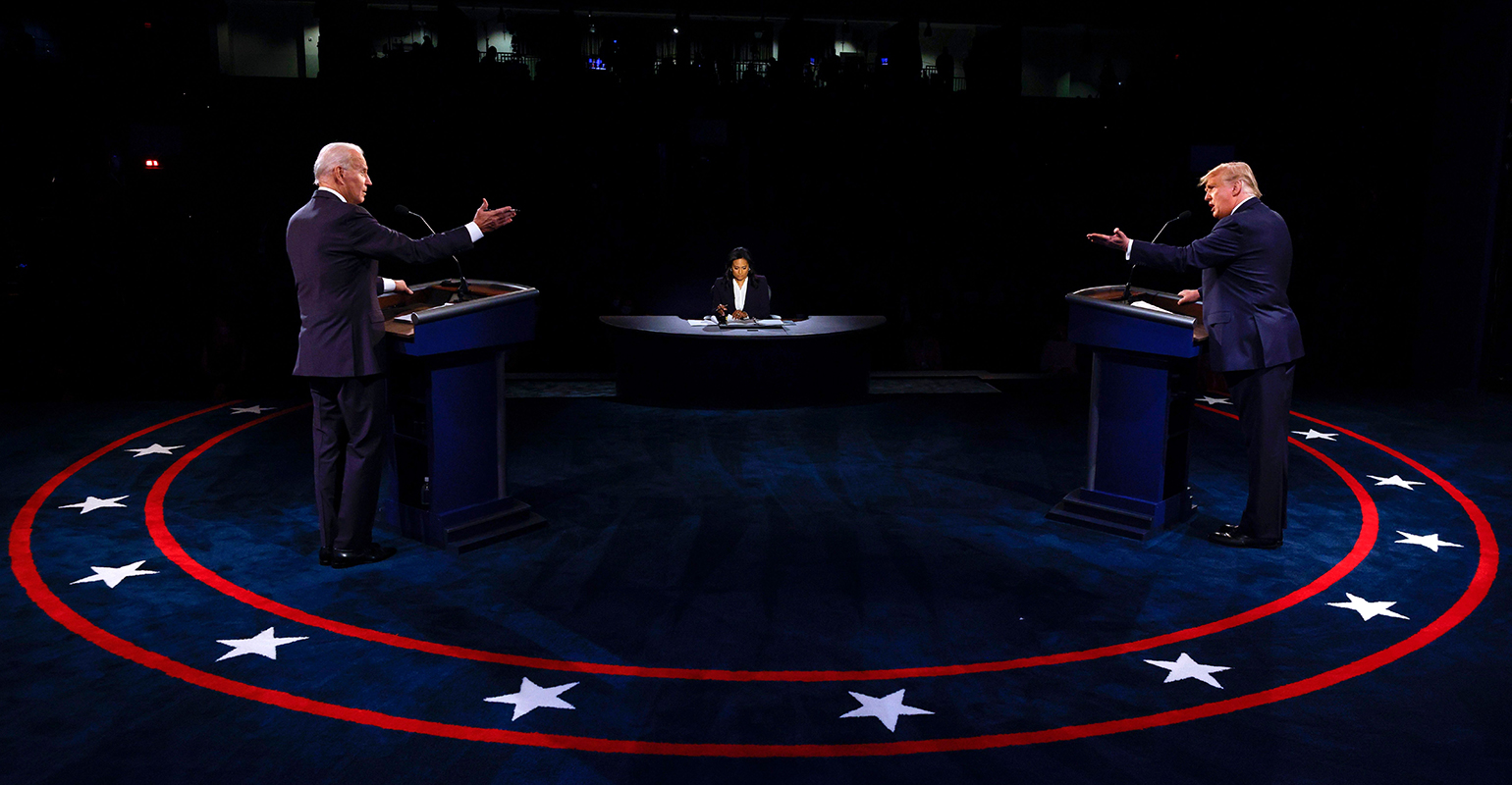
Not since the 1892 U.S. presidential election have two presidents faced off in an election. At the time, one candidate was the incumbent and the other was seeking a rematch after losing in the previous election. Sound familiar?
We know that in a typical presidential election year, anything can happen, and there are signs that 2024 may be particularly unusual. Still, the first terms of the leading candidates, President Joe Biden and President Donald Trump, have given observers a realistic idea of how they will govern and govern in their second terms. govern the economy, and how financial markets will receive their governments.
But first, a caveat of pandemic proportions: Before we encounter major distortions related to COVID-19, the impact of the first three years of the Trump administration can be assessed with an objective eye. President Joe Biden’s term is similarly but less sharply divided, as progress was made in reopening the economy during the first half of his term.
presidential priorities
At the beginning of the Trump administration, the major policy victory under unified Republican control was the passage of the Tax Cuts and Jobs Act in late 2017. Over the past decade, personal and corporate taxes have fallen by approximately $1.4 trillion, contributing to the reflationary trend that characterizes the United States. The first determined inflationary impulse of the post-global financial crisis era.
The reshoring of U.S. manufacturing through erecting trade barriers is also the core of the Trump administration’s economic policy. The administration began imposing import tariffs on a variety of commodities and goods in early 2018, with a large portion of the burden being borne by U.S.-China trade. During the trade war, new or increased tariffs were imposed on about $350 billion of U.S. goods imported from China, resulting in retaliatory tariffs on about $100 billion of goods. U.S. exports. These tariffs increased trade costs but did not significantly change the trade balance or narrow the U.S. trade deficit with China.
Under unified Democratic control, the Biden administration’s economic priorities are encapsulated in three laws in 2021 and 2022:
- The Infrastructure Investments and Jobs Act triggers $550 billion in new spending and $650 billion in reauthorization of infrastructure priorities.
- The CHIPS and Science Act focuses on technology supply chain security, allocating $280 billion to promote domestic semiconductor production and fund science and technology research.
- The Inflation Reduction Act aligns $700 billion in revenue with approximately $900 billion in spending. Much of the spending is earmarked for clean energy and climate change priorities.
Economic impact
From 2017 to 2019, U.S. GDP grew by an average of 2.8% at a seasonally adjusted annual rate, an improvement over the post-global financial crisis trend. Still, Trump’s tariffs have brought no clear benefits to U.S. manufacturing, with data showing economic growth gave way to a manufacturing decline during the period when the tariffs were imposed.
The lack of evidence of a positive impact on U.S. manufacturing or trade is significant. Tariffs raise the cost of goods, tax U.S. consumers and dampen demand. At the same time, domestic manufacturing requires capital investment and time to compete with overseas manufacturers. The Biden administration has retained most of Trump’s tariffs, but a broader, broader-based tariff regime appears to be the centerpiece of Trump’s second-term economic platform.
Under Biden, GDP growth will average between 1.9% and 3.0% in 2023, depending on when we start mitigating the impact of the epidemic in 2021 or 2022. Biden has effectively turned his platform into law, but markets have begun to signal that the days of consequence-free, uncontrolled government spending may be numbered. While just under $1 trillion in new spending from Biden’s three signature bills pales in comparison to $5 trillion in emergency pandemic spending, the willingness to continue running huge deficits in 2022 and 2023 raises questions about That is, whether budget discipline will become a priority for the U.S. economy. The second Biden administration.
market impact
Financial markets incorporate global developments and a vast amount of information, only some of which reflects the president’s decisions. Combined with the impact of the pandemic era, we realized there was so much value being gained from market analysis.
The performance of U.S. stocks over the past seven years has a better relationship with the Federal Reserve’s monetary policy than the success or failure of the White House.
The “Trump reflation” rebound in 2017 transformed the Fed’s new move to normalize interest rates after seven years of near-zero interest rates into a full-scale interest rate hike cycle. The sharp sell-off in 2018 was largely wiped out at the end of the year, when the Fed capitulated and stayed on hold in 2019.
Markets were on a roller coaster ride during the pandemic but ended up being quite positive until a surge in inflation in 2021 and 2022 triggered the most dramatic rate hike cycle in four decades, triggering a sell-off. As in late 2018 and 2019, 2023 will see a relief rally triggered by the Fed’s policy pause.
Find common ground
In the eight years since the 2016 election, the world has changed meaningfully. Four important observations struck us:
Fiscal policy is out of control. Both candidates have records of prioritizing their agendas at the expense of growing budget deficits. Even if we exclude the pandemic period, every country has managed to increase its deficit during the term. Over time, the ballooning U.S. government debt will become increasingly difficult to repay.
We don’t need to make a value judgment on this approach to fiscal governance – the market has already begun to do so.Last summer, the average interest rate on federal debt service rose to highest level Since 2010.
The peak of globalization has given way to deglobalization. We can think of the period before Trump’s tariffs as the peak of globalization. The Biden administration focuses on developing domestic technology hardware and clean energy industry capabilities, which also proves that deglobalization is proceeding smoothly. In this sense, both administrations have acted to protect U.S. interests, albeit in different ways, as bipolar power dynamics between China and the United States are reshaping the world.
Bipartisanship has hit a new low. We could have made the same point in 2016, but political dysfunction seems worse now. There is limited ability to avoid budgetary brinkmanship, let alone build consensus and enact sensible policy.
Both candidates will be lame ducks on day one of their second term. Whether this manifests itself in a reduced ability to win concessions, or a willingness to take risks without personal consequences, may depend on the candidate’s governing style.
They also face significant possibilities for sharing power. Polls and forecasts point to a race for the presidency and control of the House of Representatives.By contrast, control of the Senate appears to be tilted toward the Republicans, given that Democrats hold 23 of the 34 seats election.
No matter who wins in November, deglobalization and a lack of incentives to reduce the federal deficit are challenges we face. While all focus is on character and ability, we believe the winner will have a team determined to have clear priorities.
One final point of bipartisan praise: Under Trump and Biden, unemployment is back to levels last seen in the late 1960s. Regardless, the likelihood of continuity is high, which could mean the Main Street gains trend is likely to continue for another four years.
Ronald J. Sanchez is chief investment officer of International Trust Company




